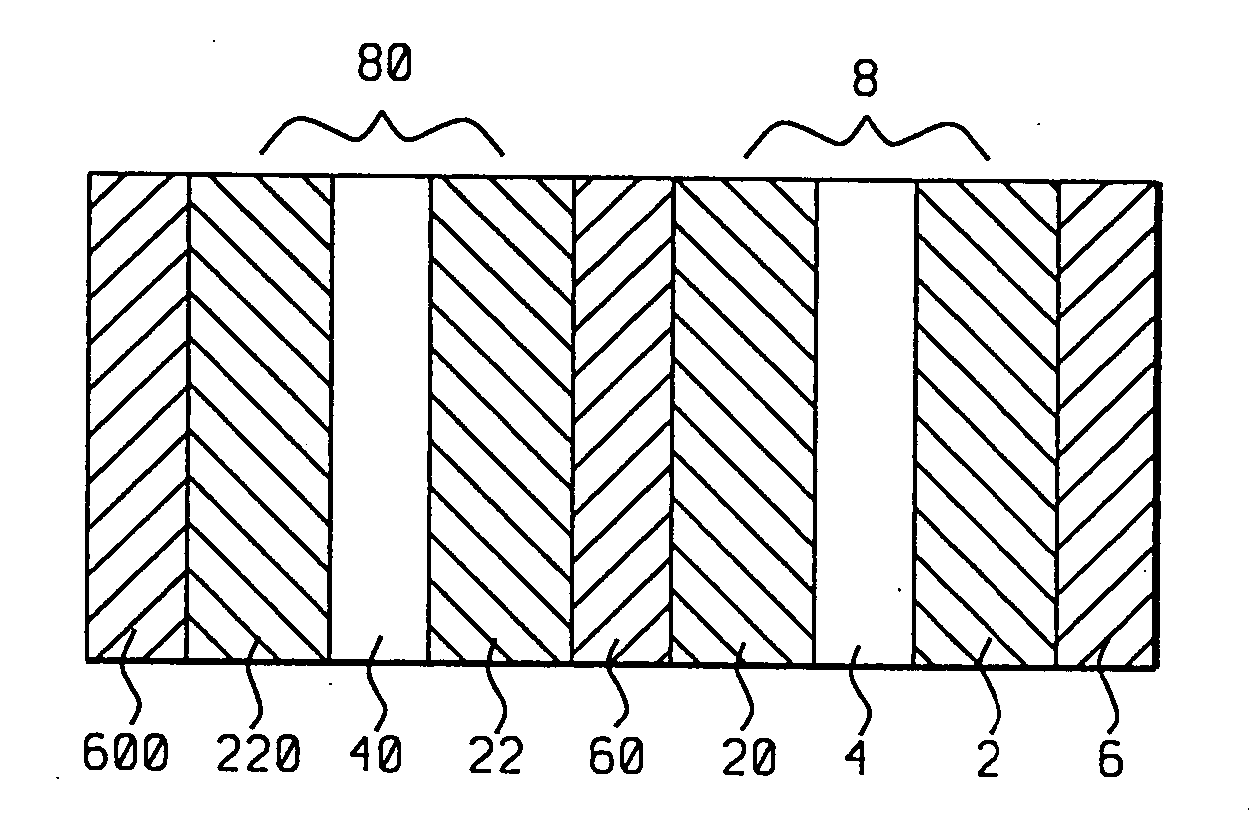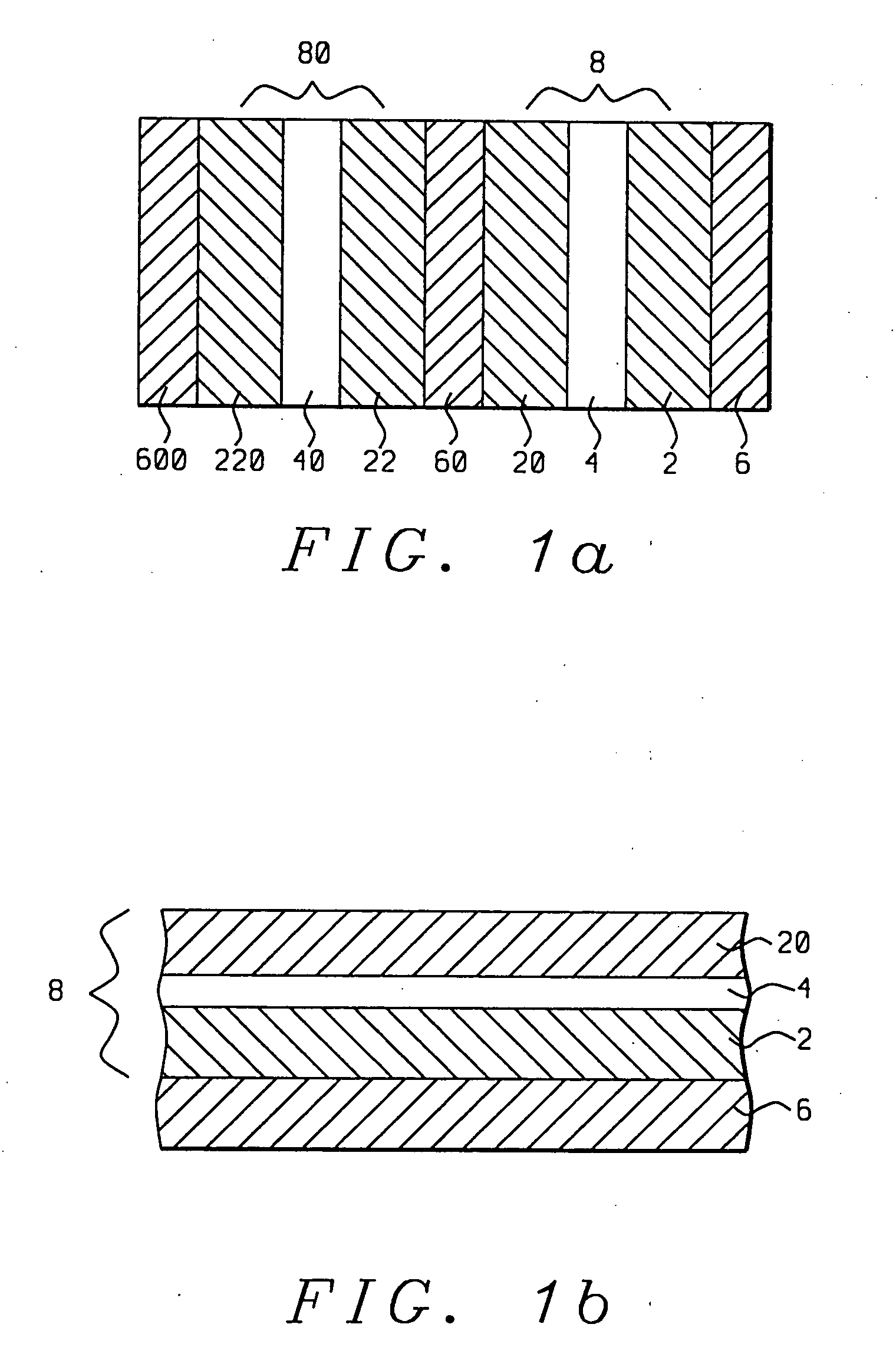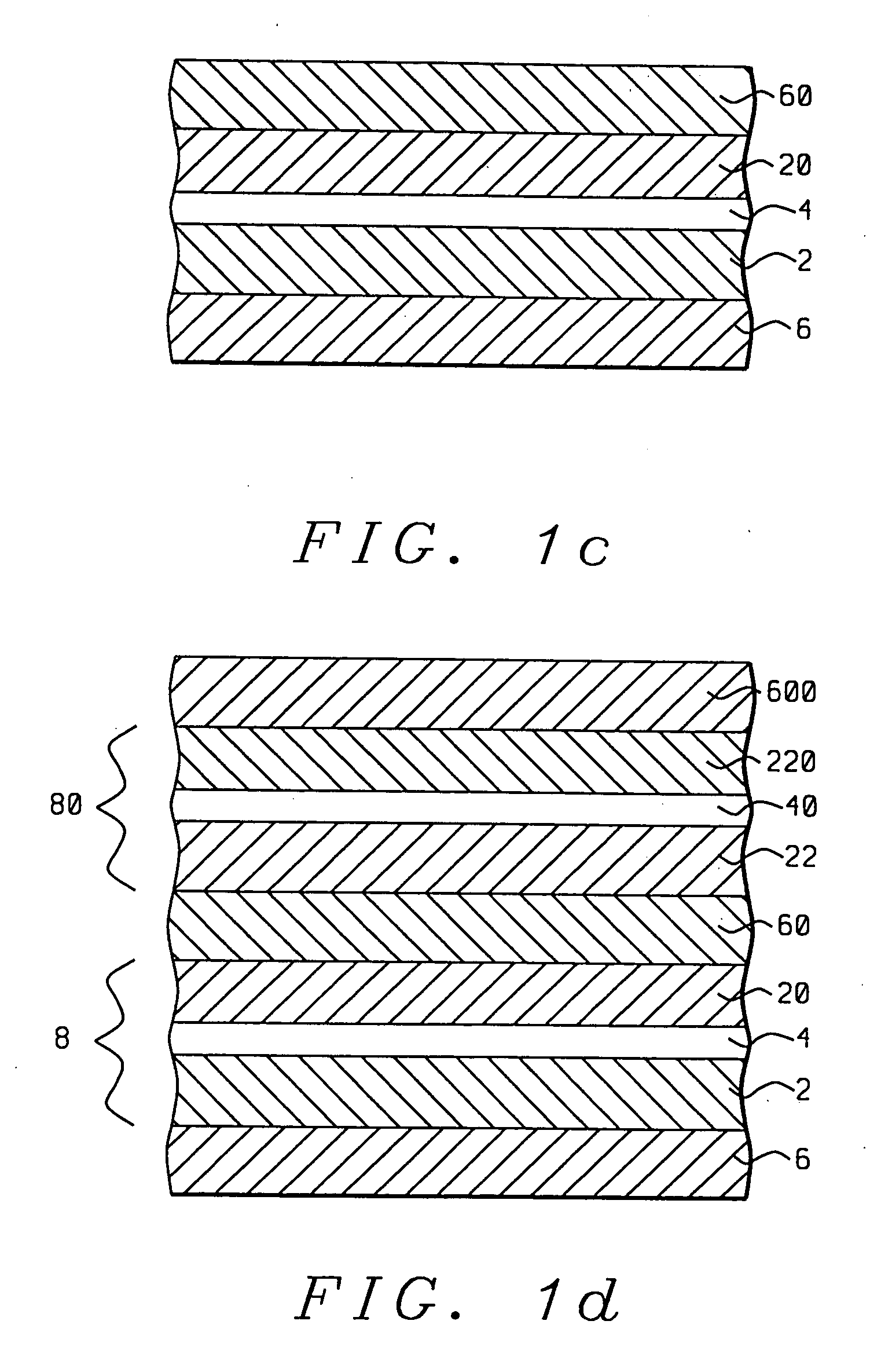Multilayered structures comprising magnetic nano-oxide layers for current perpendicular to plane GMR heads
a technology of magnetic nano-oxide and current perpendicular to the plane gmr head, which is applied in the field of fabrication of giant magnetoresistive (gmr) magnetic field sensors, can solve the problems of undesirable current shunting, adverse effects on the overall sensitivity of the sensor, and difficulty in fabricating a cpp sensor element having a resistance within reasonable limits for practical applications, and achieves enhanced magnetoresistive properties
- Summary
- Abstract
- Description
- Claims
- Application Information
AI Technical Summary
Benefits of technology
Problems solved by technology
Method used
Image
Examples
first embodiment
[0024] Referring first to FIG. 1a, there is seen a schematic cross-sectional diagram of a sensor stack formed in accord with the methods and objects of the present invention and wherein magnetic nano-oxide layers (4) and (40) are inserted between ferromagnetic layers (2), (20), (22) and (220) to form two magnetic tri-layers (8) and (80). Non-magnetic spacer layers (6), (60) and (600) separate the magnetic layers from each other and from upper and lower substrate's (not shown).
[0025] Referring next to FIG. 1b, there is shown a schematic cross-sectional diagram of an initial step in the formation of the sensor stack of FIG. 1a. There is first formed on an appropriate substrate (not shown) a first metallic, non-magnetic spacer layer (6). All metallic, non-magnetic spacer layers formed in this embodiment and in the embodiments to be described in FIGS. 2, 3, 4, and 5, can be layers of material such as Cu, Au or Ag and can be formed to a thickness of between 0.5 nm and 10 nm. Upon the spa...
second embodiment
[0029] Referring now to FIG. 2a, there is shown a schematic cross-sectional representation of a sensor stack formed in accord with the present invention. The stack of this embodiment is a CPP stack that differs structurally from that of FIG. 1a by the positioning of the its magnetic nano-oxide layers (10) and (100), which are now at the interfaces of the ferromagnetic layers (9) and (90) (rather than within the body of the ferromagnetic layer) and separated by a non-magnetic metallic spacer layer (12). The dimensions and material compositions of the layers will be discussed below in the context of their formations. It should be noted that the thickness of each ferromagnetic layer (9) and (90) is preferably equal to the sum of the thicknesses of the two ferromagnetic layers (2) and (20) and (22) and (220), in FIG. 1a.
[0030] The performance characteristics of this stack exceed those of the stack in FIG. 1a for the following reason. In order to obtain a large GMR amplitude, it is impo...
third embodiment
[0036] Referring next to FIG. 3a, there is shown the present invention, a stack configuration in which one of the ferromagnetic layers (16) is exchange biased (pinned) by an antiferromagnetic layer (15). In this case the antiferromagnetic layer would be a layer of antiferromagnetic material chosen from the group consisting of MnPt, NiMn, IrMn, CrMnPt and MnPtPd, and deposited to a thickness of between 5 nm and 30 nm. The magnetization of the remaining ferromagnetic layer (160) is free to move; thus, layer (160) is a ferromagnetically free layer.
[0037] In prior art CPP spin-valves structures it has been observed that the use of an antiferromagnetic pinning layer leads to a decrease of GMR amplitude. This is not the case in the present embodiment, however, since the resistance is dominated by the magnetic nano-oxide layers. Adding the resistance of an antiferromagnetic layer in series is not going to affect the resistance appreciably. This structure, therefore, comprises only one soft...
PUM
| Property | Measurement | Unit |
|---|---|---|
| thickness | aaaaa | aaaaa |
| thickness | aaaaa | aaaaa |
| thickness | aaaaa | aaaaa |
Abstract
Description
Claims
Application Information
 Login to View More
Login to View More - R&D
- Intellectual Property
- Life Sciences
- Materials
- Tech Scout
- Unparalleled Data Quality
- Higher Quality Content
- 60% Fewer Hallucinations
Browse by: Latest US Patents, China's latest patents, Technical Efficacy Thesaurus, Application Domain, Technology Topic, Popular Technical Reports.
© 2025 PatSnap. All rights reserved.Legal|Privacy policy|Modern Slavery Act Transparency Statement|Sitemap|About US| Contact US: help@patsnap.com



